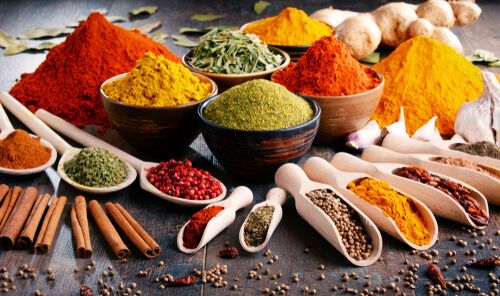Blog
Who is the biggest importer of spices?

United States: The Spice Enthusiast
When it comes to spice imports, the United States is the undisputed leader and the largest importer of spices in the world. Several factors contribute to the U.S.’s prominent position in the global spice trade:
- Culinary Diversity: The United States is a melting pot of diverse culinary traditions, with influences from all over the world. This rich culinary tapestry drives the demand for a wide range of spices to create authentic and fusion dishes.
- Consumer Preferences: American consumers have embraced international cuisines and flavors, leading to an increased demand for spices from various regions, including Asia, Latin America, the Middle East, and Africa.
- Processed Food Industry: The U.S. processed food industry relies heavily on spices and seasonings to enhance the taste and appeal of packaged foods. This industry’s growth contributes significantly to spice imports.
- Health and Wellness Trends: The perception of spices as not only flavor enhancers but also health-promoting ingredients has boosted their consumption. Spices are increasingly used for their potential health benefits.
- Ethnic Communities: The presence of diverse ethnic communities in the United States has created a demand for spices that cater to specific cultural preferences and traditional recipes.
- Gourmet and Specialty Markets: The rise of gourmet and specialty food markets in the U.S. has increased the demand for high-quality, premium spices and spice blends.
- Global Sourcing: American companies actively source spices from around the world, making the United States a hub for the import and distribution of spices.
Challenges and Opportunities
While the United States leads in spice imports, it faces challenges such as ensuring the quality and authenticity of imported spices, adherence to regulatory standards, and addressing sustainability concerns. However, these challenges also present opportunities for spice producers worldwide to tap into the vast U.S. market by providing high-quality, ethically sourced spices.
The United States stands as the world’s biggest importer of spices, driven by its diverse culinary landscape, consumer preferences, and the globalization of food. This robust demand for spices underscores the integral role they play in American cuisine and culture. As the spice industry continues to evolve and adapt to changing tastes and trends, the United States will remain a prominent destination for spice imports, providing a flavorful journey for its culinary enthusiasts.
1. Regulatory Standards: The U.S. has stringent regulatory standards for food safety and quality. Spice producers and exporters worldwide must adhere to these standards to access the American market. Compliance with these regulations is crucial for successful spice imports.
2. Organic and Sustainable Trends: There is a growing demand for organic and sustainably sourced spices in the United States. Consumers are increasingly concerned about the environmental impact and ethical practices associated with spice production. Meeting these demands can create opportunities for spice-exporting countries.
3. Supply Chain Challenges: The global supply chain disruptions experienced in recent years have impacted spice imports. Spice-producing countries and exporters must address supply chain challenges to ensure a steady flow of spices into the U.S. market.
4. Traceability and Transparency: Consumers are showing an increased interest in knowing the origin of the spices they consume. Spice producers can enhance their competitiveness by providing traceability and transparency in their supply chains.
5. Online Retail: The growth of e-commerce and online spice retailers has opened up new avenues for spice imports. Businesses that can adapt to online sales channels can tap into a broader customer base.
6. Innovation and Value-Added Products: Spice exporters can explore opportunities to offer innovative and value-added spice products. These may include unique spice blends, flavored salts, spice-infused oils, and other culinary creations that cater to evolving consumer tastes.
7. Export Partnerships: Forming strategic partnerships with U.S.-based distributors, wholesalers, and retailers can facilitate market entry for spice-producing countries. Building relationships with American buyers is crucial for accessing the U.S. spice market.
8. Education and Promotion: Spice-producing countries can invest in educational and promotional initiatives to raise awareness about their unique spices and culinary traditions. Demonstrating the versatility and uses of specific spices can drive consumer interest.
9. Research and Development: Investing in research and development to improve spice cultivation, processing techniques, and packaging can lead to enhanced product quality and appeal in the U.S. market.
In conclusion, the United States’ status as the biggest importer of spices presents both opportunities and challenges for spice-producing countries. While meeting regulatory standards and addressing supply chain issues are essential, embracing trends such as sustainability, traceability, and online retail can help spice exporters thrive in the vibrant U.S. spice market. The demand for global flavors and culinary experiences ensures that the United States will continue to be a significant destination for spice imports.



